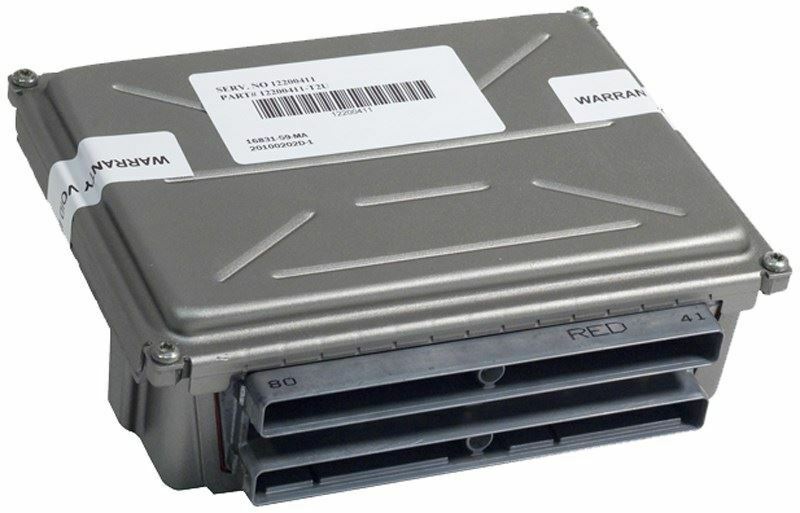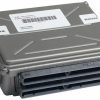Restore Your Truck’s Heartbeat and Drive with Renewed Confidence
Is your 2004 Escalade EXT, Sierra, or Tahoe feeling sluggish, unpredictable, or just not itself? A failing Powertrain Control Module (PCM) can be the hidden culprit behind a host of frustrating issues, from a persistent check engine light to stalling at the worst possible moments. It’s the brain of your engine, and when it falters, the entire vehicle suffers. This isn’t just an inconvenience; it’s a matter of reliability and peace of mind. We’re here to provide a straightforward, dependable solution: a professionally programmed PCM, service number 12586242, tailored specifically to your vehicle.
Forget the hassle and high cost of a dealership visit. We take the guesswork out of the equation. Simply provide your vehicle’s VIN (Vehicle Identification Number) during checkout, and our technicians will flash this module with the latest, most stable GM software updates for your exact configuration. It arrives at your door ready to install, helping you get back on the road quickly and confidently.
Warning Signs and How to Overcome Them
If you’re experiencing any of the following, a failing PCM could be the cause. This module is the definitive solution for these common symptoms:
- ✔ Unexplained Check Engine Light (CEL) illumination.
- ✔ Diagnostic Trouble Codes (DTCs) such as P0601, P0602, P0606, or other internal controller errors.
- ✔ Rough or erratic engine idling and stalling.
- ✔ A noticeable decrease in fuel economy.
- ✔ Hesitation or stumbling during acceleration.
- ✔ Intermittent no-start conditions where the engine cranks but won’t fire.
- ✔ Transmission shifting problems or harsh engagement.
A Technician’s Pro-Tip
Before you replace your PCM, take a moment to perform a full battery and charging system test. A weak battery or a failing alternator can cause low voltage issues that mimic PCM failure. Also, carefully inspect the main engine ground straps for corrosion or looseness. A poor ground connection is one of the most common, and often overlooked, causes of erratic electronic behavior in these trucks. Securing these fundamentals can sometimes solve the problem and will always ensure your new module functions flawlessly.
Guided Installation for a Lasting Fix
Replacing your 2004 Escalade EXT PCM is a manageable task for a DIY enthusiast. Follow these steps for a smooth installation and regain control of your vehicle’s performance.
- Safety First: Disconnect the negative terminal from your vehicle’s battery to prevent any electrical shorts.
- Locate the Old Module: On most compatible trucks and SUVs (like the Sierra, Silverado, Tahoe, and Escalade), the PCM is located in the engine bay on the driver’s side, often under or near the battery tray. On other models (like the Trailblazer and Envoy), it’s typically next to the airbox.
- Disconnect the Harnesses: The PCM will have several large electrical connectors. Each has a locking tab or lever. Carefully release these locks and gently pull the connectors straight out. Never force them.
- Remove the Module: Unbolt the PCM from its mounting bracket. Keep the hardware safe as you will need it for the new unit.
- Install the New PCM: Mount your new, pre-programmed module onto the bracket and securely fasten it.
- Reconnect Everything: Plug the electrical harnesses back into the new PCM, ensuring they click firmly into place and the locking tabs are engaged. Reconnect the negative battery terminal.
- Final Step: In some cases, a security relearn procedure (often called a CASE relearn or Passlock relearn) may be necessary with a scan tool for the vehicle to start. This syncs the new PCM with your vehicle’s anti-theft system.
Guaranteed Compatibility for Your Vehicle
This module is a direct replacement for service number 12586242 and is compatible with a wide range of 2004 GM vehicles. Please verify your original part number or service ID to ensure a perfect match. This unit is confirmed to fit the following models when equipped with the correct engine and options:
- Cadillac Escalade, ESV, EXT
- Chevrolet Avalanche 1500
- Chevrolet Silverado 1500, 2500, 3500 (Gasoline)
- Chevrolet SSR
- Chevrolet Suburban 1500, 2500
- Chevrolet Tahoe
- Chevrolet Trailblazer EXT (5.3L)
- GMC Envoy XL, XUV (5.3L)
- GMC Sierra 1500, 2500, 3500 (Gasoline)
- GMC Sierra Denali
- GMC Yukon, XL 1500, XL 2500
- Hummer H2
- Buick Rainier (5.3L)
- Isuzu Ascender (5.3L)
Note: This module is a direct fit for units with service numbers 12586242, 19299226, 89017738, YFKD, YFKF, YFKH, YFKJ, YFKX, YFXL, YFXM, YFXN, YFXP, and YHTN.
Do I need to do anything after installing this PCM?
Our pre-programming service handles the engine and transmission software. However, on most GM vehicles of this era, you will need to perform a security relearn procedure. This can often be done with a capable bidirectional scan tool and is required to sync the new PCM with your vehicle’s anti-theft system so the engine will start and run.
What is a VIN and why do you need it?
The VIN, or Vehicle Identification Number, is a unique 17-digit code for your specific vehicle. It contains information about the make, model, engine, transmission, and factory-installed options. We use this to load the exact, correct GM-certified software onto your module, ensuring perfect compatibility and performance.
Will this fix my transmission shifting issues?
In many cases, yes. The PCM also controls transmission functions, including shift points and line pressure. If your shifting problems are caused by faulty electronic commands from the old module, this new unit will resolve them. However, it will not fix internal mechanical issues within the transmission itself.
Is this a plug-and-play part?
It is nearly plug-and-play. The module is programmed to your VIN before shipping, so you don’t need to visit a dealer for software flashing. The only additional step typically required is the security relearn procedure after installation, which ensures the vehicle recognizes the new computer.
How do I find my original part number?
The service number (SERV. NO.) is printed on a sticker on your original PCM. You can compare it to the list of compatible numbers in our description to confirm fitment before ordering. Matching this number is the best way to guarantee you’re getting the right part.


